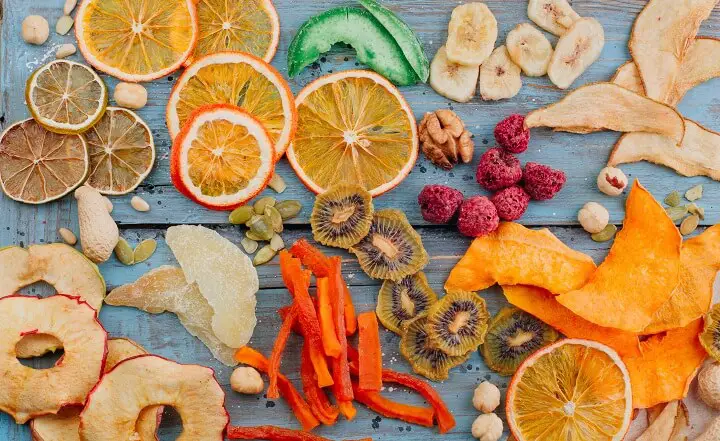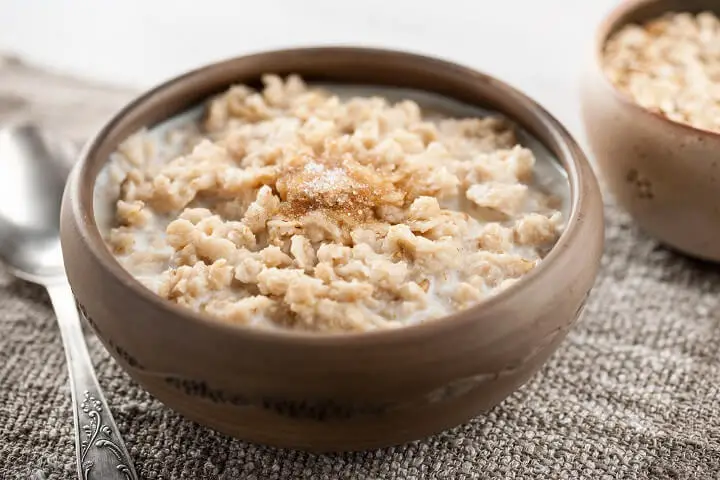Potable Water
How to Survive in the City When Disaster Strikes
Want To Prep But Not Sure Where To Begin?
Sign Up for Our Newsletter and Get Your FREE One Year Urban Survival Plan!
I will never give away, trade or sell your email address. You can unsubscribe at any time.

Add to that the hard-to-pronounce ingredients in many store-bought food options, and you could be doing more harm to your family in a crisis.
Want to save this post for later? Click Here to Pin It On Pinterest!
Preparing for an emergency doesn’t have to be hard. There are many options for drying and preserving food that you can do in addition to your usual food preparation.
Clean water is the absolute must-have item for anyone in an emergency situation. Potable water is vital, and it is best to have a lot of water stored. The general rule of thumb is one gallon of water per person per day for survival. This means that a family of 5 should store 35 gallons of water to survive a week in an emergency. Add in more to keep animals and livestock hydrated as well.
Many homesteaders choose to store water in plastic jugs or water bottles. Another great way to add to your survival supply is to fill unused mason jars with clean water. Ultimately, any clean container can store water on the homestead in case of an emergency. Look around your property for containers that you can fill up with water just in case.
A food dehydrator is a homesteader’s best friend. Investing in a quality food dehydrator allows you to save those produce and meat that grow right on the homestead.
Simply cut up the fruit that you want to dehydrate and place them on the drying racks. Plug in the dehydrator and allow the constant flow of warm air to circulate overnight. Dried fruits and vegetables are easy to store in plastic sandwich bags and often can last up to a year in the proper conditions.
Consider experimenting with different kinds of fruit and vegetables to find your family’s favorite. Expand the drying process by adding drying racks to your dehydrator as well.
Many homesteaders also create homemade fruit leathers using special drying inserts to create an easy to store (and fun!) snack for kids of all ages. You’ll know exactly what you are putting into your body with these dried produce items and won’t have any added sugar or ingredients that shouldn’t be there.
You can also dehydrate fruit and vegetables in the oven on a low temperature.
Another great way to use a dehydrator on the farm is to make your own jerky. Turkey, pork, and beef jerky are all great options to use to create shelf-stable proteins. You can make jerky in the dehydrator or use a smoker to help dry out the meat to make it last a long time.
Dried proteins are vital to survival and can help your family outlast an emergency situation. However, remember that eating protein requires a lot of water to digest. So keep that water storage high if you add dried protein to your stockpile.
Homesteaders are no stranger to the art of canning your own food. While storing manufactured canned items is okay in a pinch, they usually have higher amounts of sodium and other ingredients that aren’t as healthy. Doing your own canning allows you to control exactly what is in the food.
Consider canning leftover fruits and vegetables from last year’s garden to store in case of an emergency. Other items that are great to can for extended shelf life include chicken, turkey, or even pickled eggs.
There are some foods at the store that already have a longer shelf life. These items are dry goods that have longer expiration dates.
While we don’t want added salt in our survival food options, it is important to have a lot of salt on hand in your emergency kit. Salt is a natural preserver and is important to consume in healthy quantities. It is important to also note that salt with added iodine can spoil quicker than other salt options so make sure to pick and choose what kind of salt to use in your survival area.
Storing tubs of oatmeal for an emergency is a great way to pack a lot of energy and substance in just a few servings. It also is easy to make in an emergency situation.
Different kinds of flour can also be easily stored and last a long time on the shelf as well. Consider stockpiling different flour options, like white, whole wheat, and almond, to help give variety in a long term emergency situation. Easy-to-make mixes like pancake and biscuit mix are also good to have on hand.
Powdered milk and eggs are other key items to keep on hand in an emergency situation. They are easy to store and can last a long time on a shelf. Simply add water to them to help satisfy hunger as well as add essential nutrients.
Other dry good staples that should line your emergency area include peanut butter and whole nuts. These critical items are healthy options that are high in calories. You can also choose to purchase unsalted or low sodium nuts to help cut down on sodium levels in a long term emergency situation.
Nuts and nut butters are also easy to eat with minimal preparation, which is helpful when in a crisis.
Another excellent option for healthy emergency foods that you should stockpile includes shelf-stable liquids.
Olive and coconut oil can all be easy to store with a long shelf life. These oils help create emergency food dishes as well as adding essential fats that can be life-saving in a bad situation.
Honey is a fantastic food option for an emergency situation. Even if you don’t usually eat honey, it’s properties for both nutrition and health are vital. Honey is a natural sweetener that packs a punch of energy in the smallest quantities. You can also use honey directly on wounds to help heal the body.
Stockpiling your emergency area is vital for homesteaders across the country. Use items that you already have on hand and add to it slowly over time to create a well-stocked space. Remember that water is the most crucial item to have on hand in an emergency situation and for survival.
Choosing to use homemade items, like dehydrated fruit and canned goods, are a great way to limit the added chemicals and unnecessary ingredients that most store-bought items contain.
Like this post? Don’t Forget to Pin It On Pinterest!
Want To Prep But Not Sure Where To Begin?
Sign Up for Our Newsletter and Get Your FREE One Year Urban Survival Plan!
I will never give away, trade or sell your email address. You can unsubscribe at any time.
Your email address will not be published. Required fields are marked *
© Copyright 2010-2020 Urban Survival Site · All Rights Reserved
Blogroll · Disclosure · Privacy · Terms
Facebook · Pinterest · Twitter
* Urban Survival Site is a participant in the Amazon Services LLC Associates Program, an affiliate advertising program designed to provide a means for us to earn fees by linking to Amazon.com and affiliated sites.
Follow us on Facebook to see more articles every day!
Potable Water
Research & References of Potable Water|A&C Accounting And Tax Services
Source


